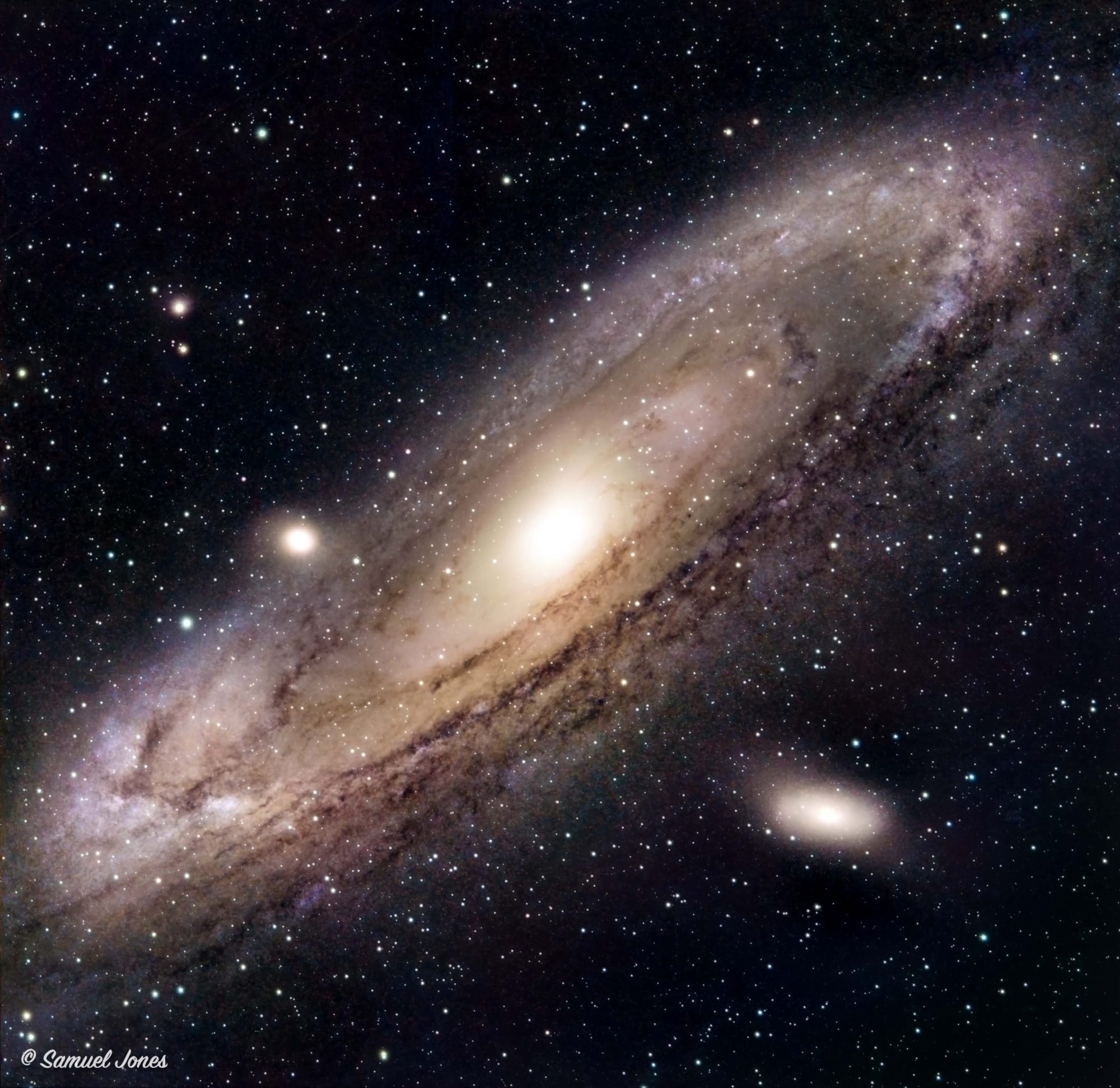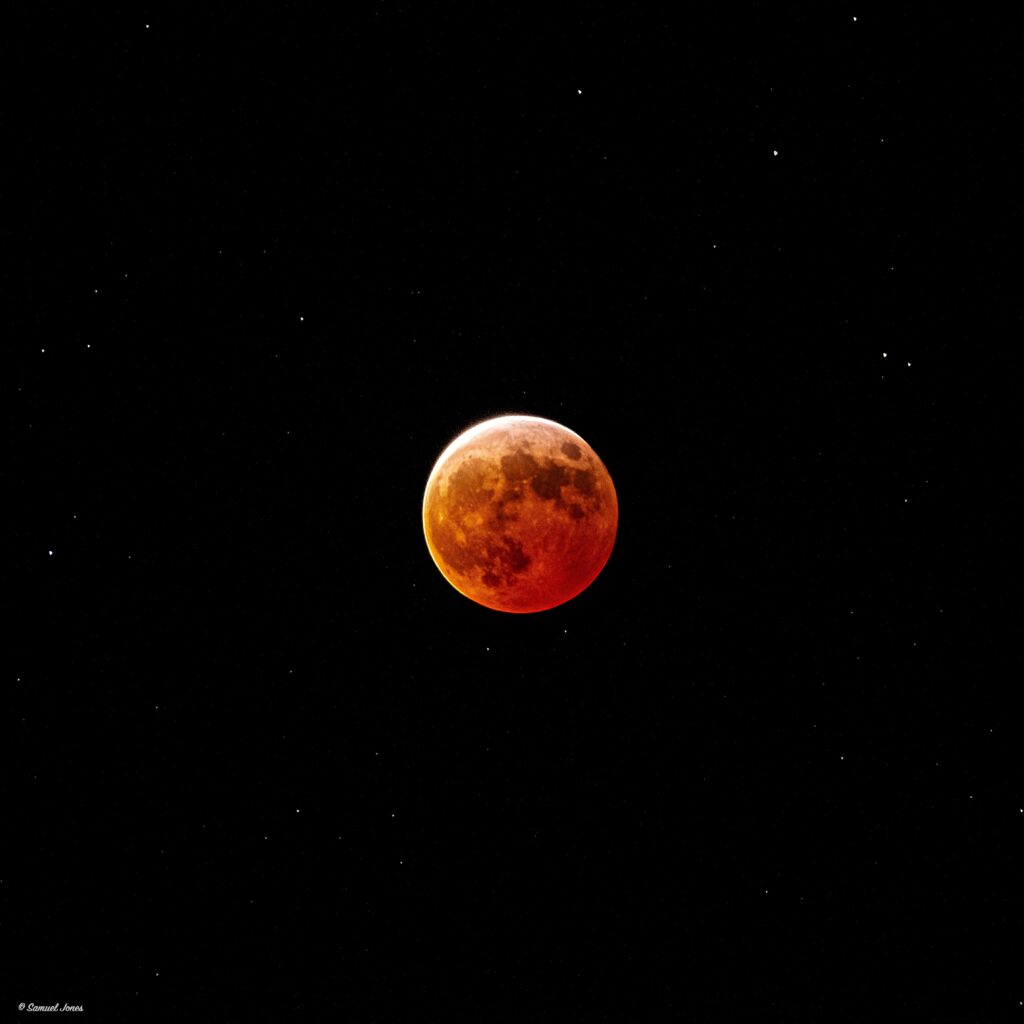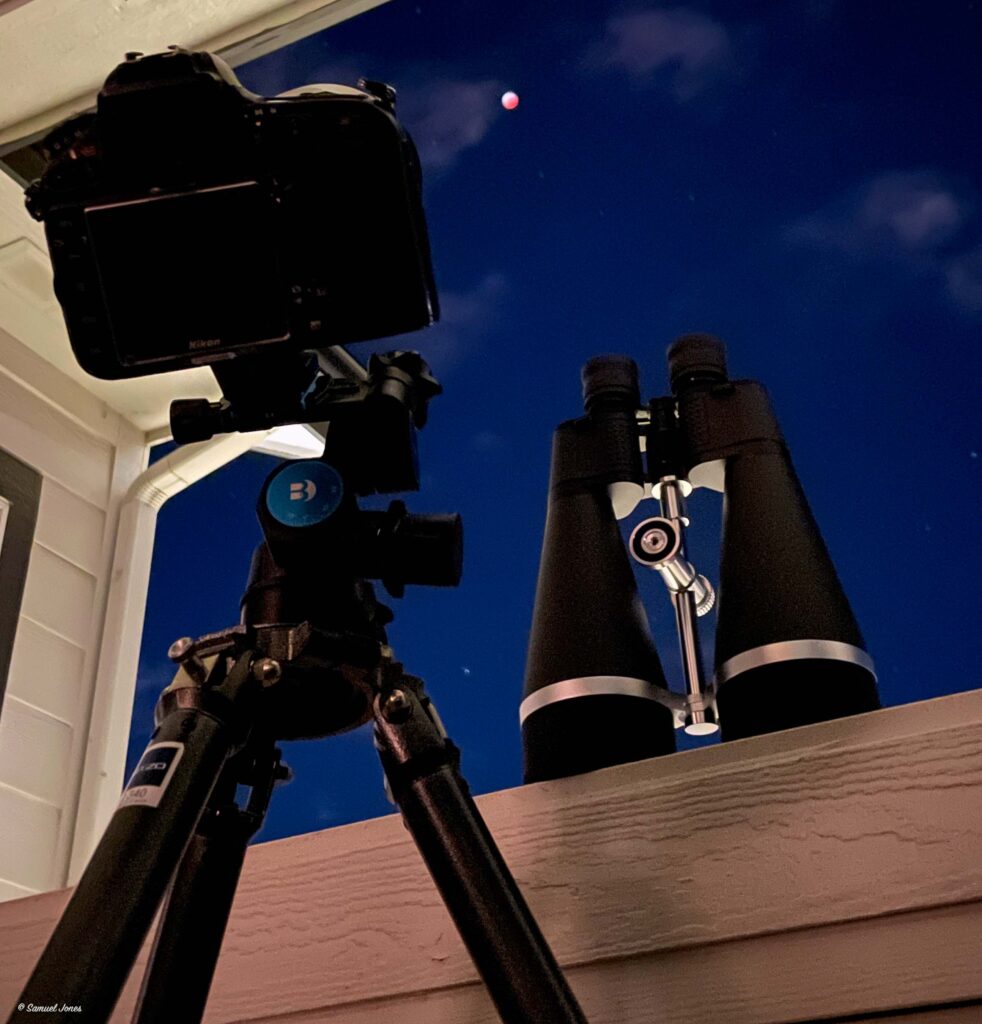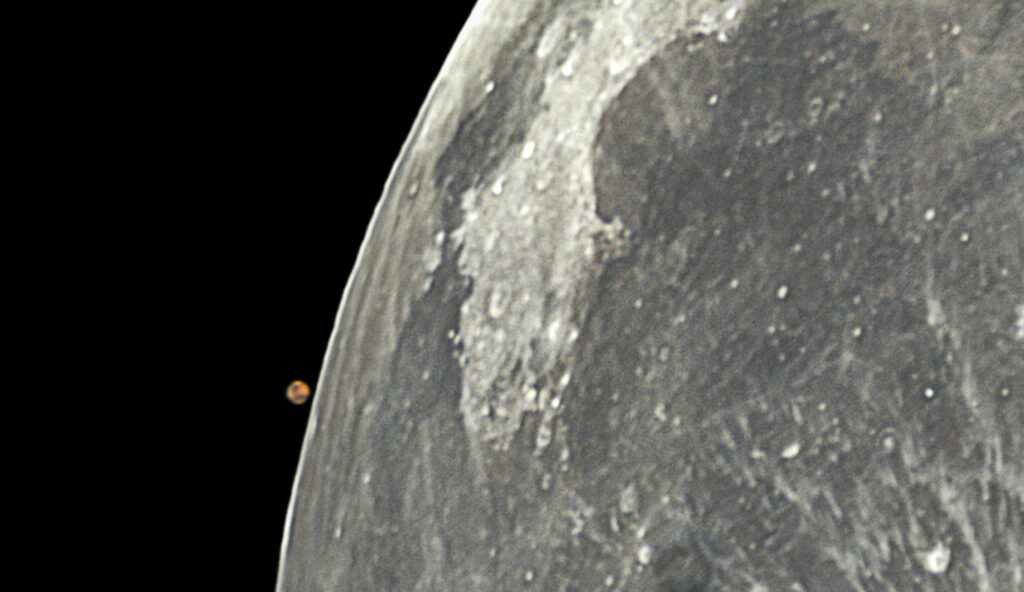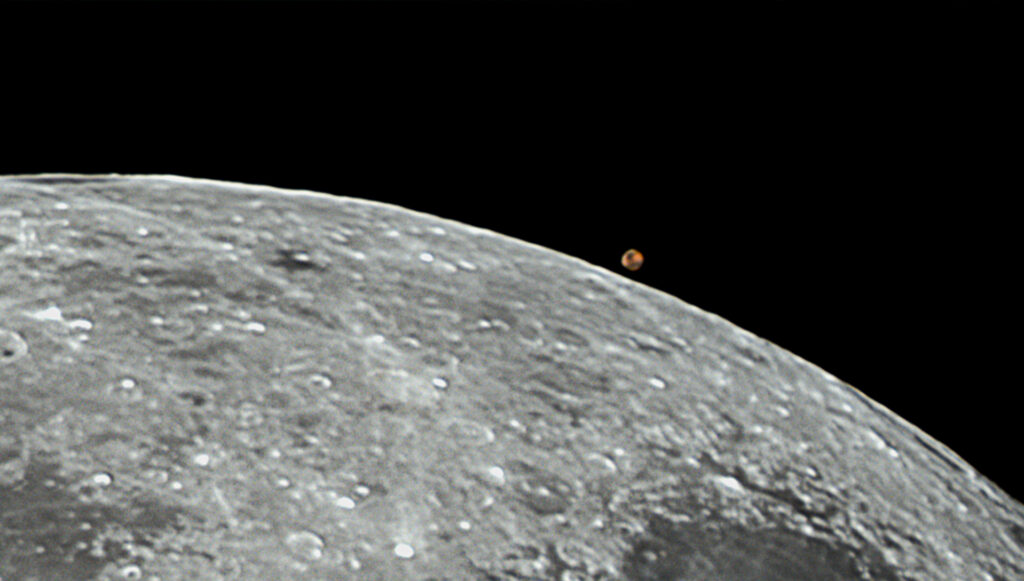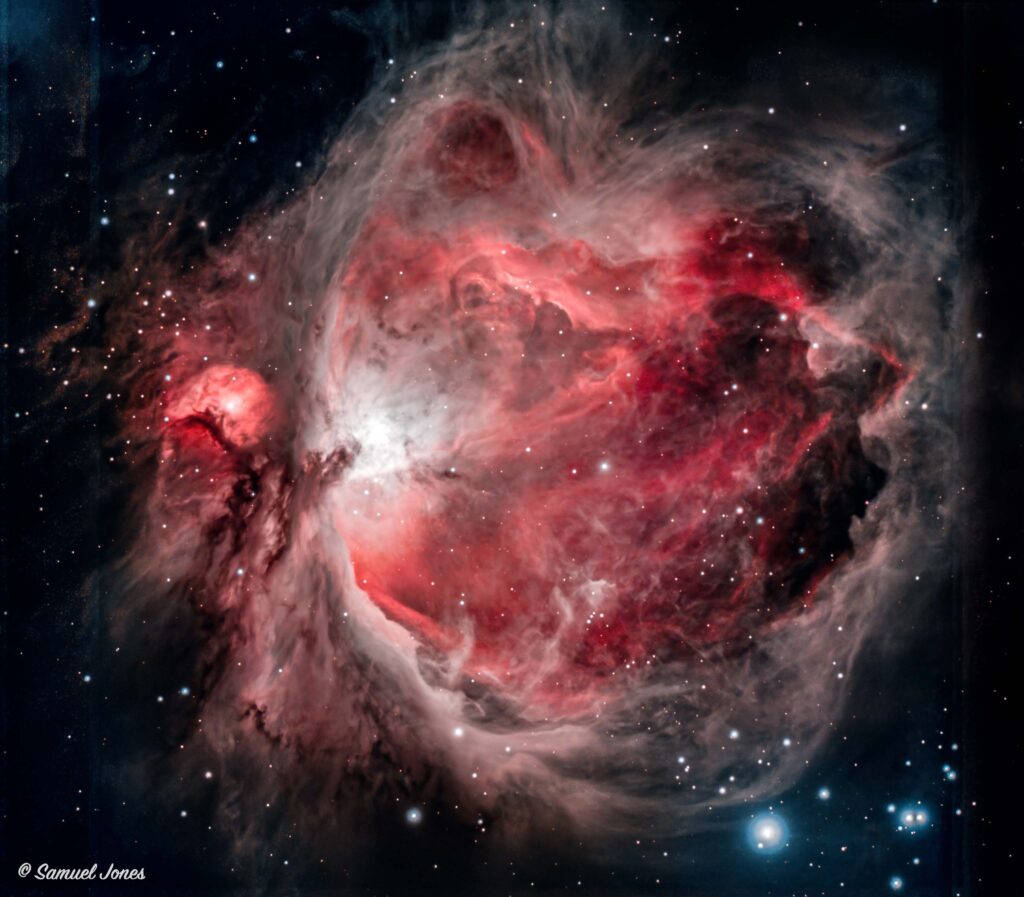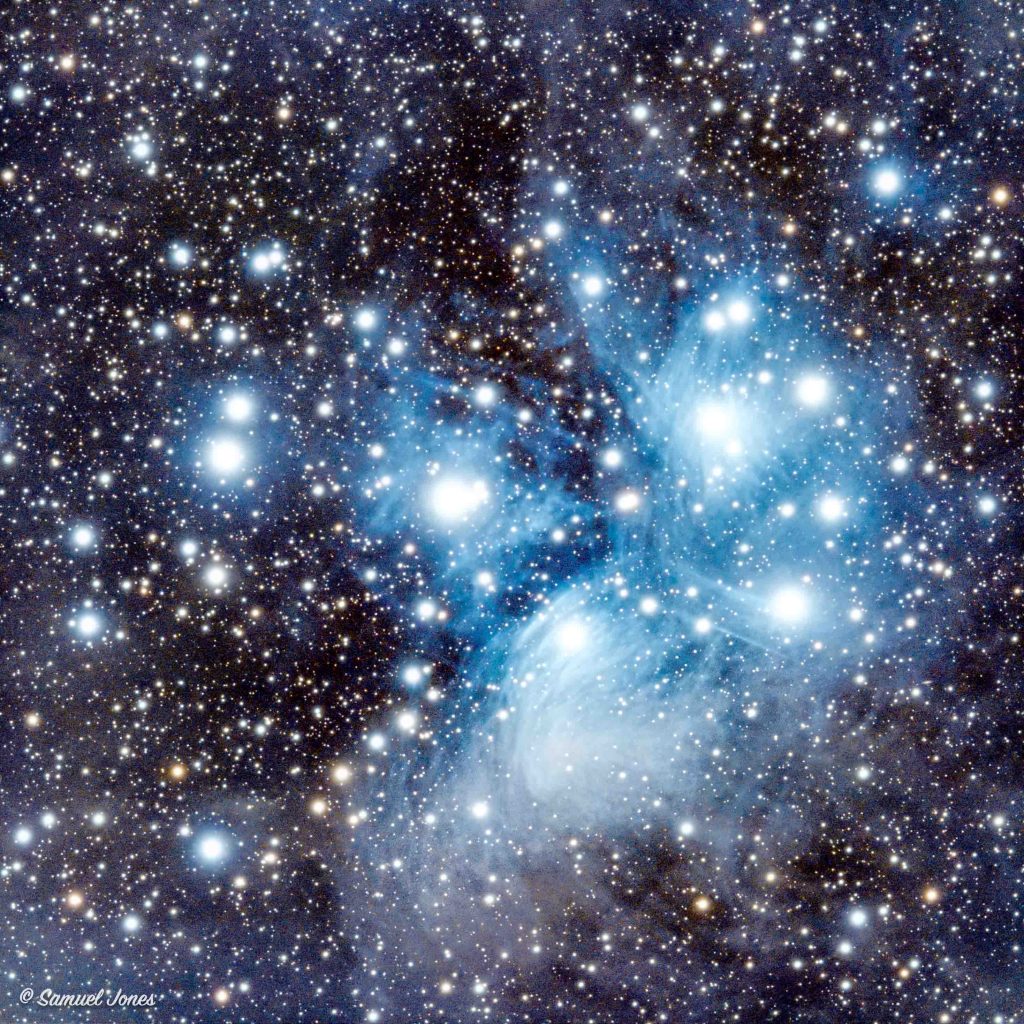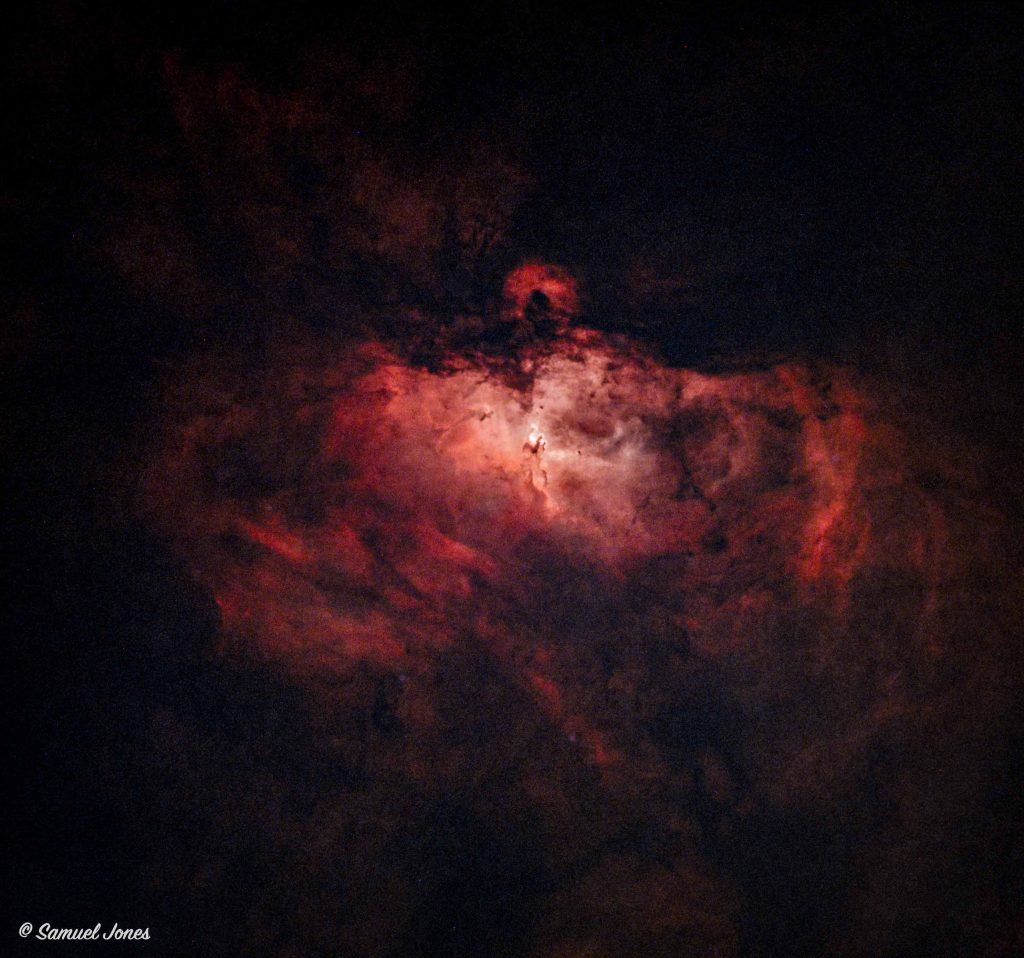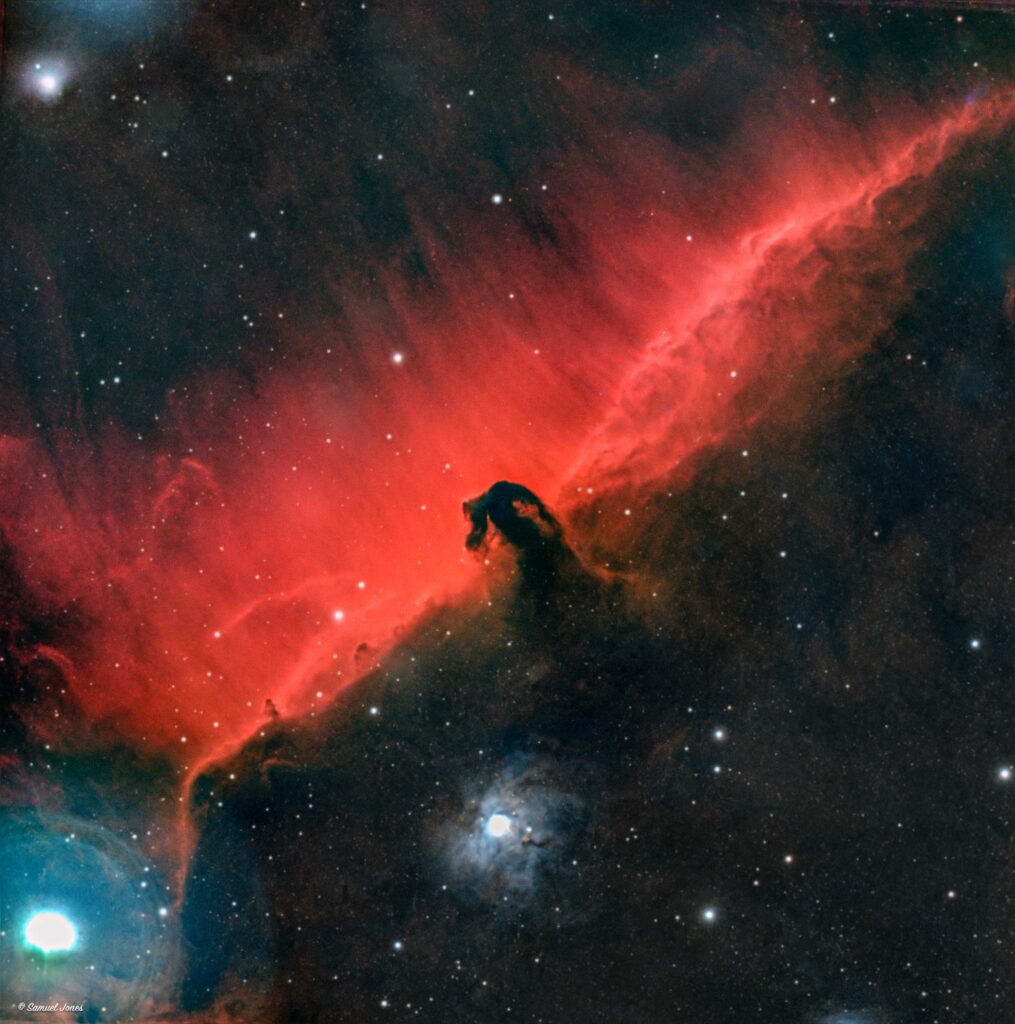
You keep him in perfect peace whose mind is stayed on you, because he trusts in you. Trust in the Lord forever, for the Lord God is an everlasting rock.
Isaiah 26:3-4
The Horsehead Nebula is one of my favorite objects in the night sky. It’s a small dark nebula located just south of the left star in Orion’s Belt. It lies in front of a large star forming region, IC 434, which is basically a big cloud of hydrogen that is ionizing and creating the beautiful and intense red color.
This nebula is a part of the Orion cloud complex which consists of many interest points (more of which is to come soon). It was discovered in 1888 by a Scottish astronomer on a photographic plate and cataloged as Barnard 33 (or B33). The nebula lies south of the left most star in Orion’s Belt, Alnitak.
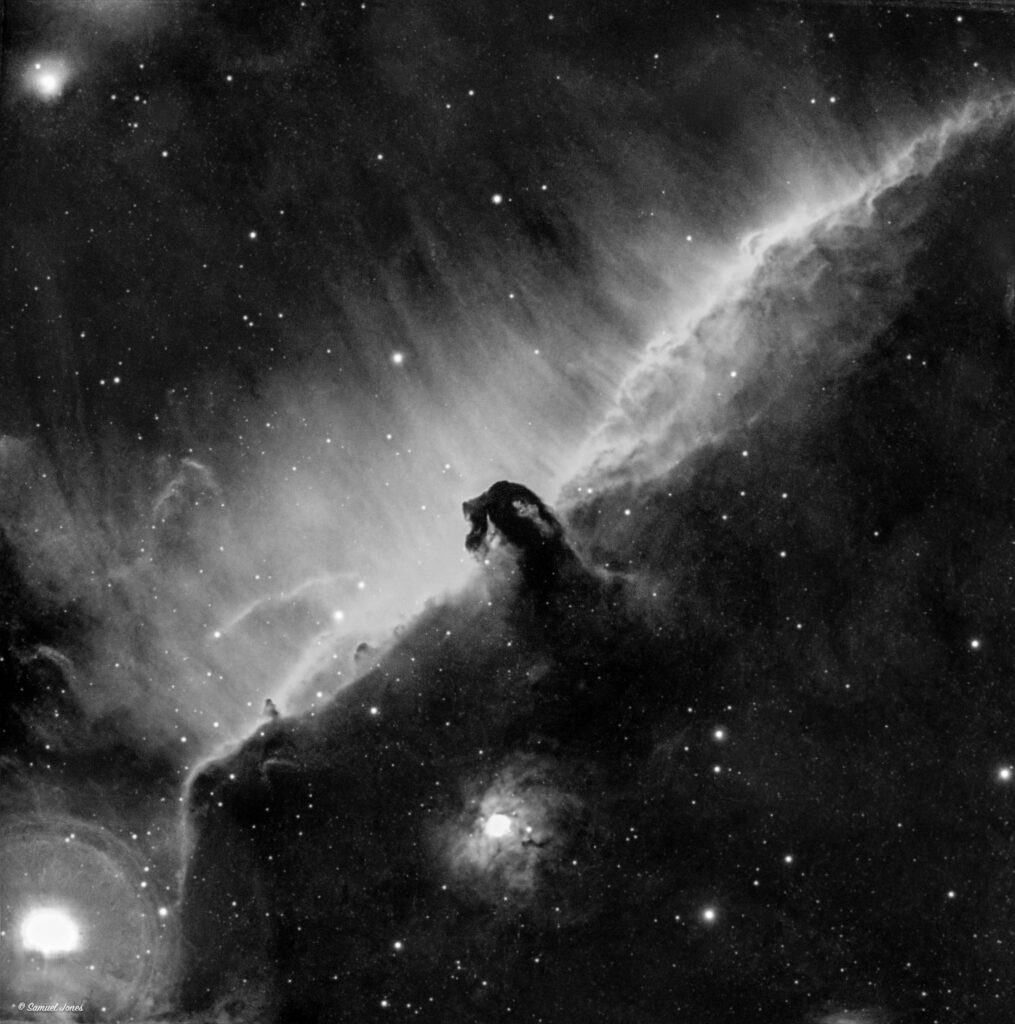
The most fascinating part of the ionized region behind the Horsehead is the magnetic fields which, if you look closely enough, channel the gases into whispy streams like rivers on a map.
The 27.5 hours of exposure time reveal the heavy concentration of dust all around the Horsehead that look like a slight brownish glow. The image was captured over 6 nights.
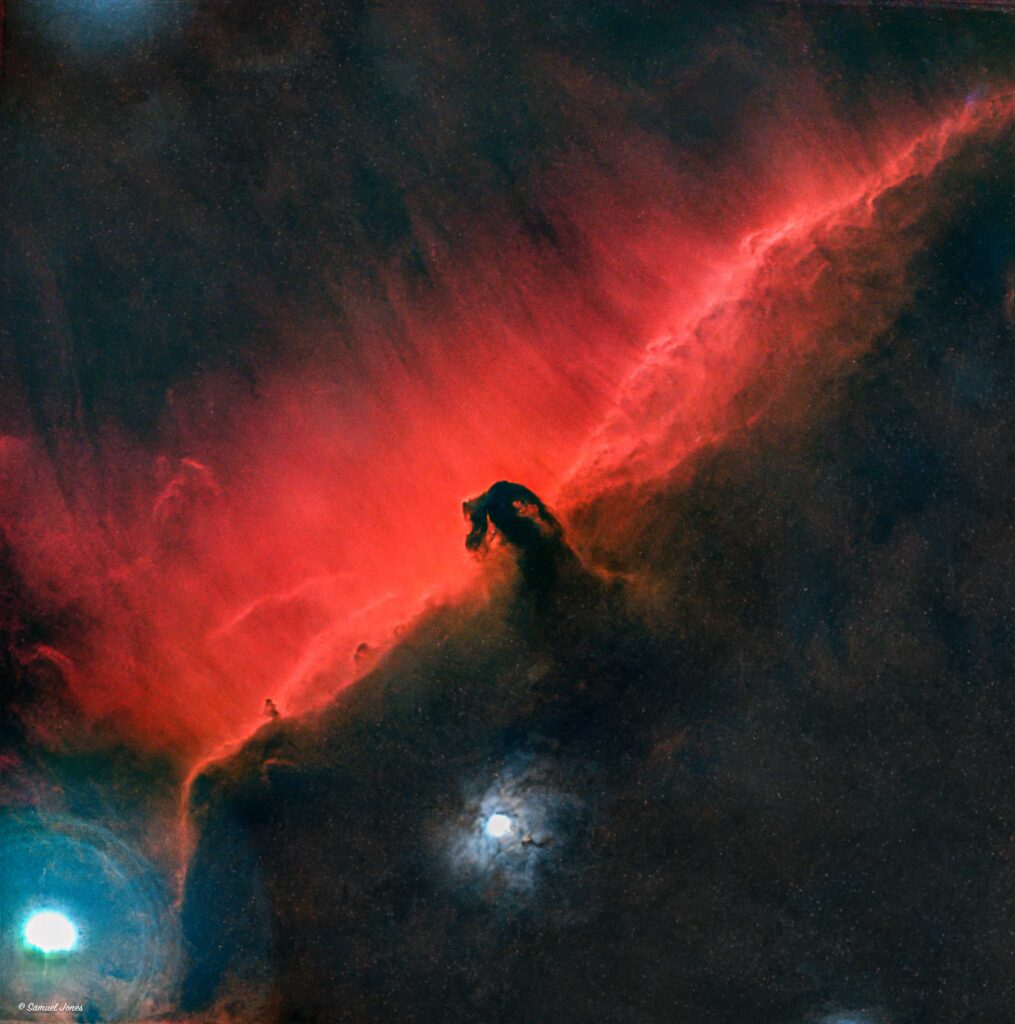
Technical info:
– Total integration time: 27.5 hours
Processing: Stacked with Deep Sky Stacker (using Kappa-Sigma method), color calibrated, background extraction, and StarNet star removal in Siril, stretched and further color correction in Adobe Photoshop, denoised using GraXpert, then final star recomposition in Siril.
Equipment used:
– Telescope: Astro-Tech AT130ED + 0.8x reducer/flattener (f5.6)
– Mount: @SkyWatcherUSA AZ-EQ6 Pro
– Camera: ZWO ASI533MC Pro
– Autoguider: 60mm svbony scope + asi120mm mini
– Filter: Optolong L-Extreme
